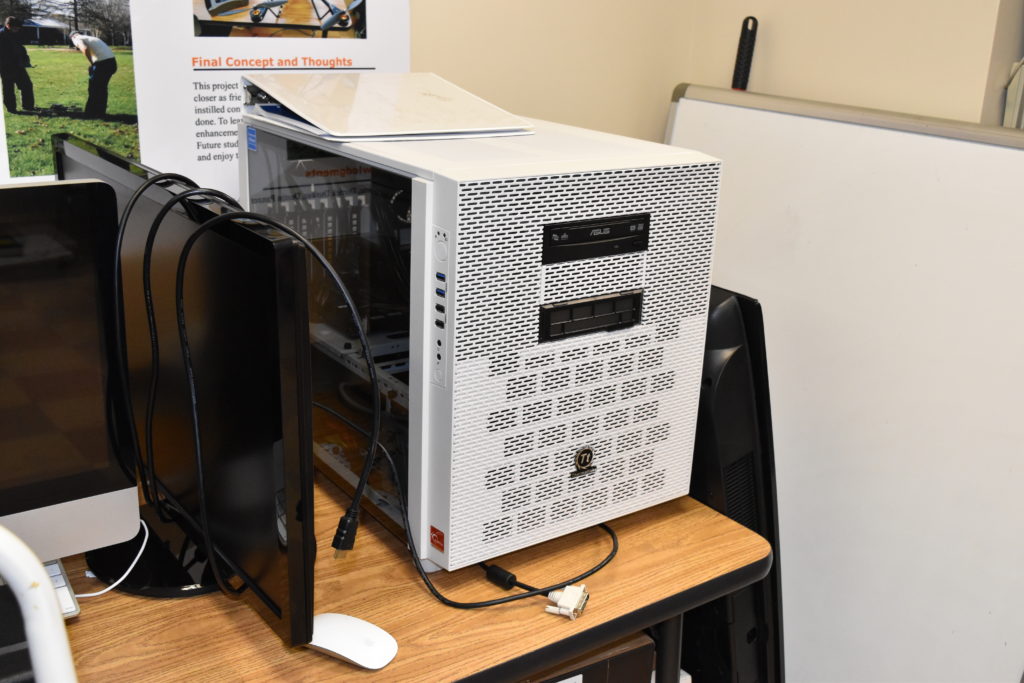Derthick lab 304 is currently housing a computer built by Nathaniel Wentzel, assistant professor of physics, and senior Tilly Erwin, a double major in computer science and math with a minor in physics.
Though funded by the physics department, the computer was built in Derthick because of the computer science department’s access to tools and space needed for the job.
“It’s been a lot of fun. [It’s] been a challenge,” Erwin said about working on the computer.

Wentzel and Erwin built the computer over the course of a few weeks this past summer. The computer will allow Wentzel and Erwin to run simulations that would normally be run on supercomputers on the National Science Foundation’s (NSF) network.
The computer will still take about the same amount of time to process simulations as those on the NSF’s network, but having it on campus will allow for closer engagement. The computer will also be connected to a larger network of supercomputers but do most of its work with the supercomputer Comet in the Supercomputing Center in San Diego.
The computer is similar to a gaming computer but has been modified for supercomputing and runs on Linux software. It was also built to be expandable and serve multiple purposes.
Wentzel and Erwin will be using the computer for research in large scale molecules and running simulations on them more efficiently. Erwin has helped build the computer and will run simulations on it as part of her 499 undergraduate research project.
The computer has not been active since the school year began, but Wentzel hopes to have it back up soon. He is currently working on files and simulations to be loaded onto the computer, but first he will have to request time from the NSF to run on their network of supercomputers. The NSF will then decide if the project is worth pursuing.
Wentzel explains, “If it’s rejected, they’ll tell us what needs to be fixed, and we can resubmit.”
Erwin is writing code to help the computer read files and make a trajectory through points in three dimensions. This will allow the computer to map out how molecules move and give a trajectory through them.
In the future Wentzel hopes to move the computer into the physics lab in the science building. The computer will be used for advanced physics and math classes as well as research projects.

